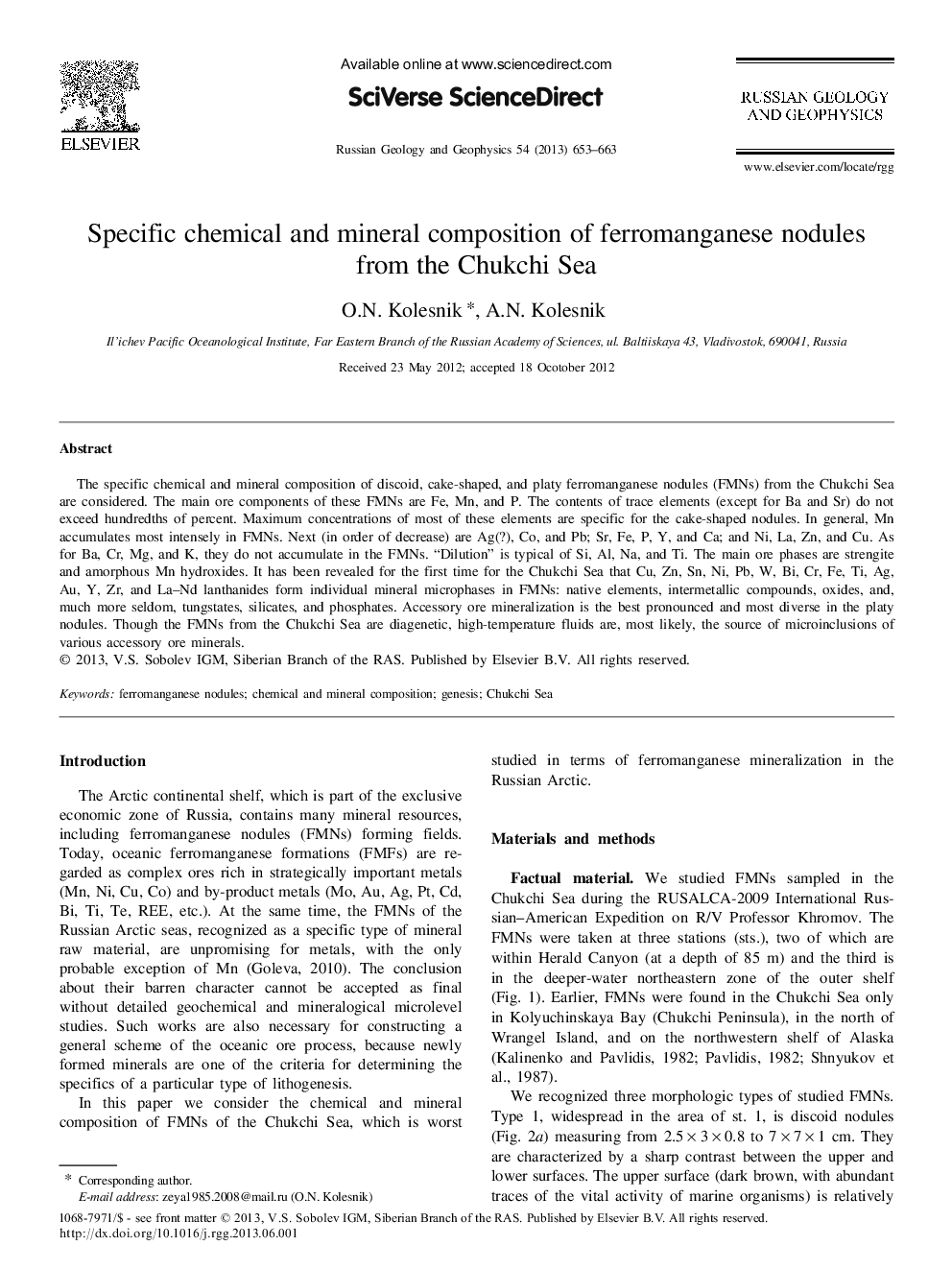| Article ID | Journal | Published Year | Pages | File Type |
|---|---|---|---|---|
| 4737434 | Russian Geology and Geophysics | 2013 | 11 Pages |
The specific chemical and mineral composition of discoid, cake-shaped, and platy ferromanganese nodules (FMNs) from the Chukchi Sea are considered. The main ore components of these FMNs are Fe, Mn, and P. The contents of trace elements (except for Ba and Sr) do not exceed hundredths of percent. Maximum concentrations of most of these elements are specific for the cake-shaped nodules. In general, Mn accumulates most intensely in FMNs. Next (in order of decrease) are Ag(?), Co, and Pb; Sr, Fe, P, Y, and Ca; and Ni, La, Zn, and Cu. As for Ba, Cr, Mg, and K, they do not accumulate in the FMNs. “Dilution” is typical of Si, Al, Na, and Ti. The main ore phases are strengite and amorphous Mn hydroxides. It has been revealed for the first time for the Chukchi Sea that Cu, Zn, Sn, Ni, Pb, W, Bi, Cr, Fe, Ti, Ag, Au, Y, Zr, and La–Nd lanthanides form individual mineral microphases in FMNs: native elements, intermetallic compounds, oxides, and, much more seldom, tungstates, silicates, and phosphates. Accessory ore mineralization is the best pronounced and most diverse in the platy nodules. Though the FMNs from the Chukchi Sea are diagenetic, high-temperature fluids are, most likely, the source of microinclusions of various accessory ore minerals.
